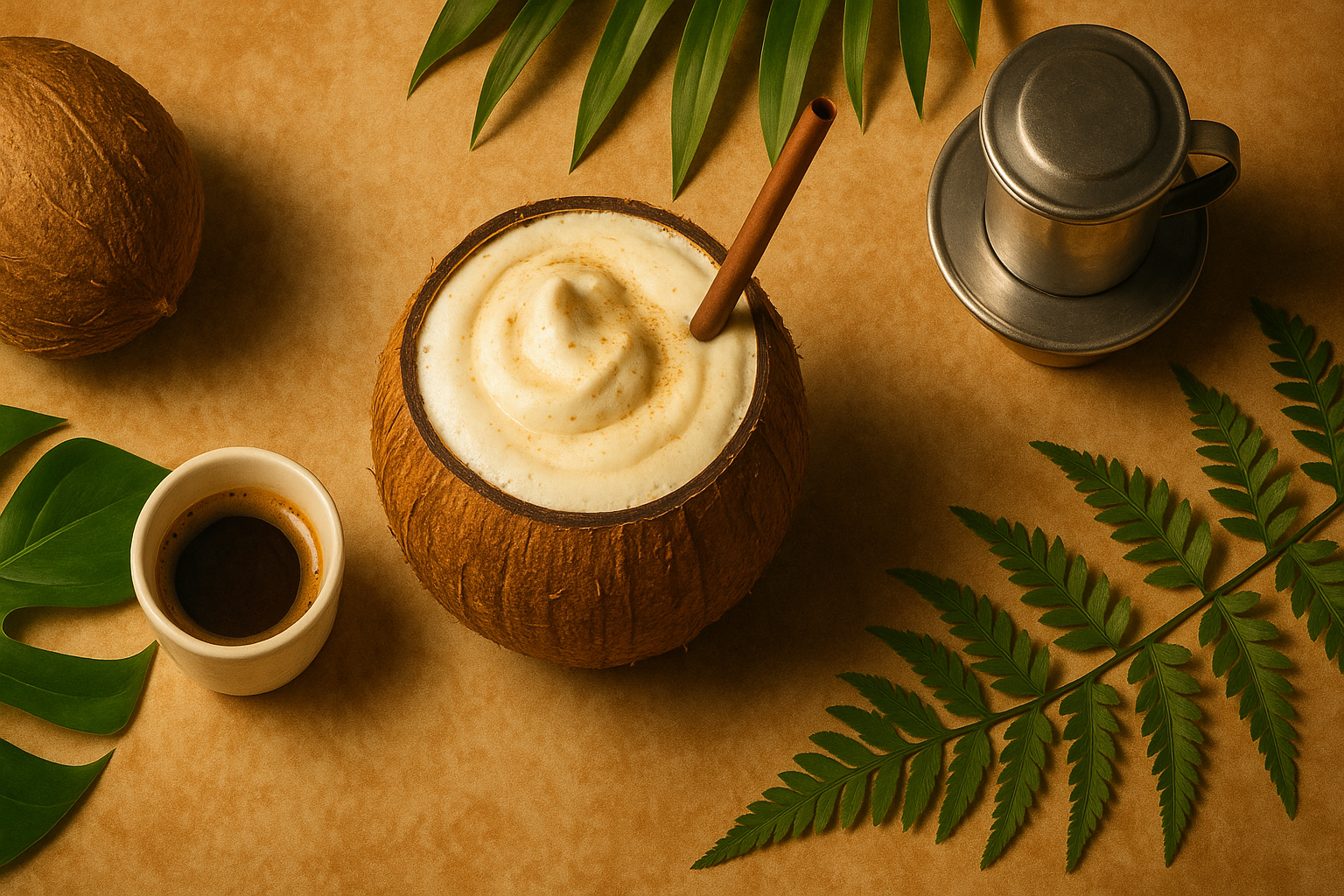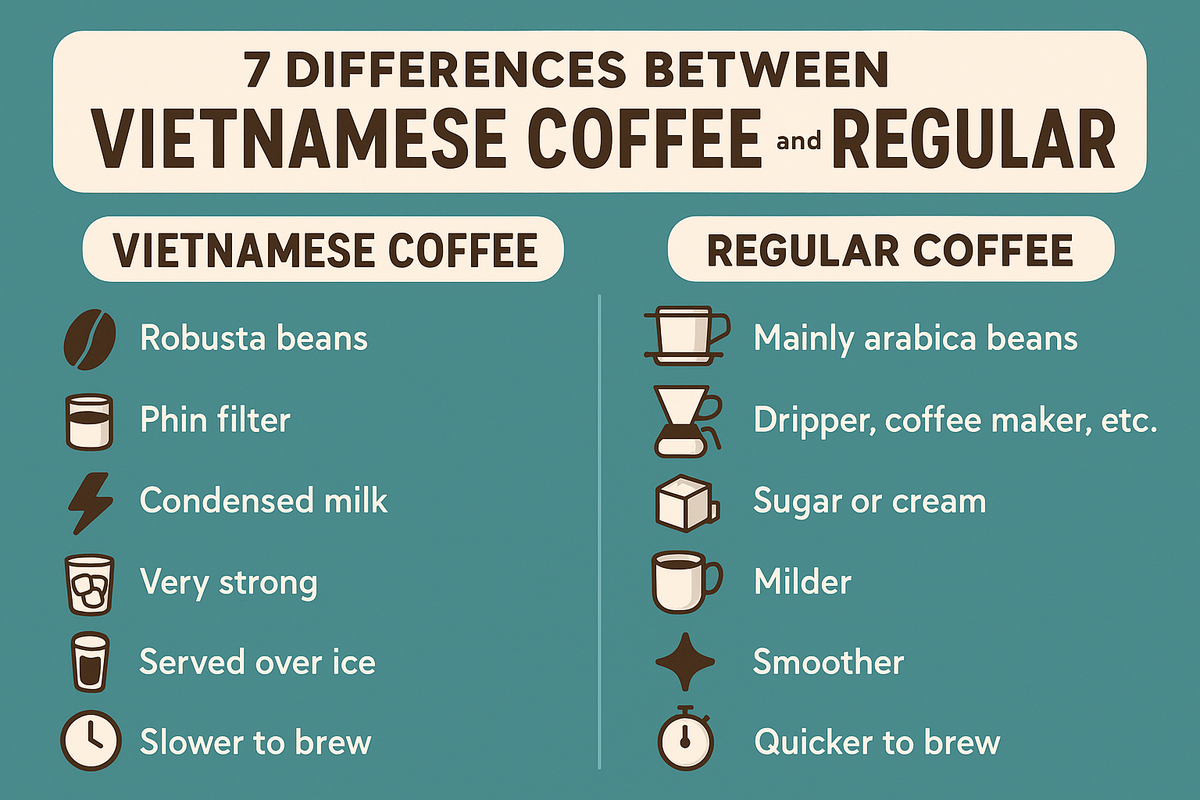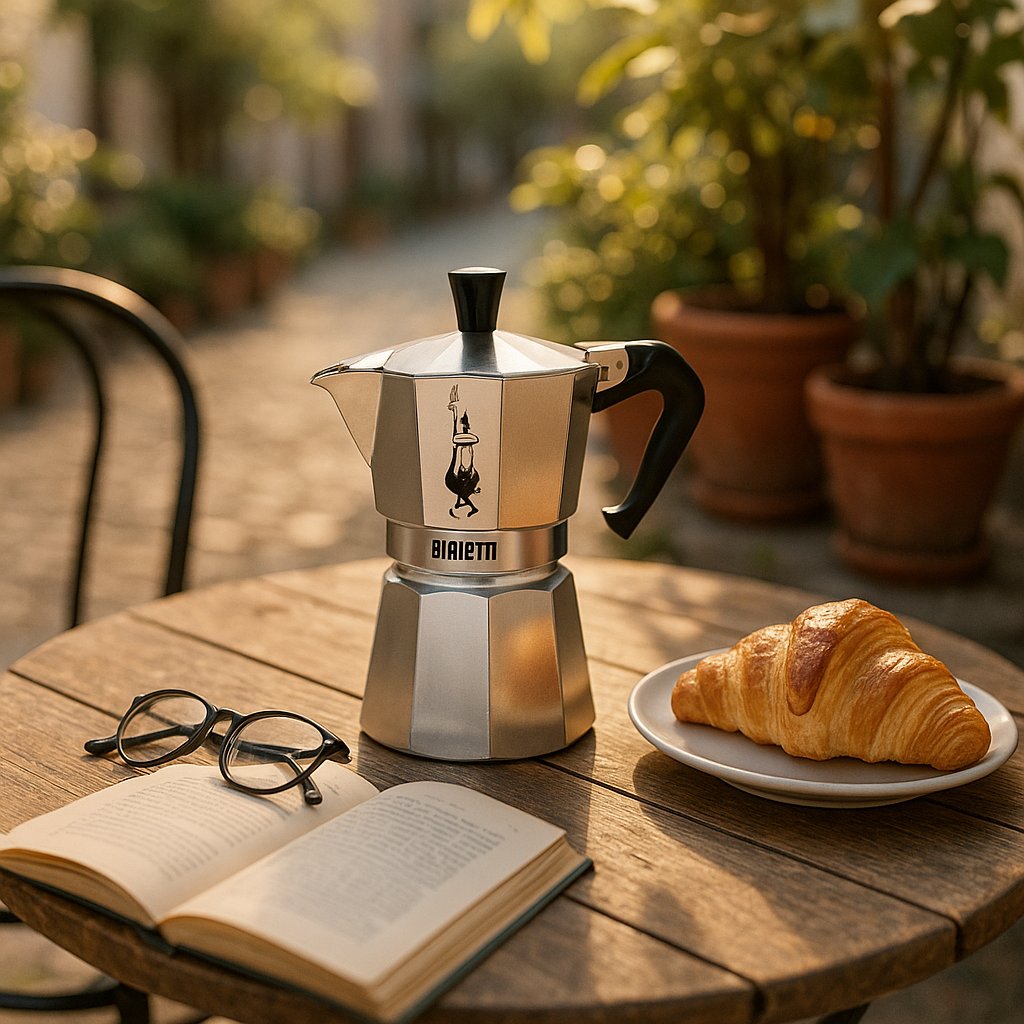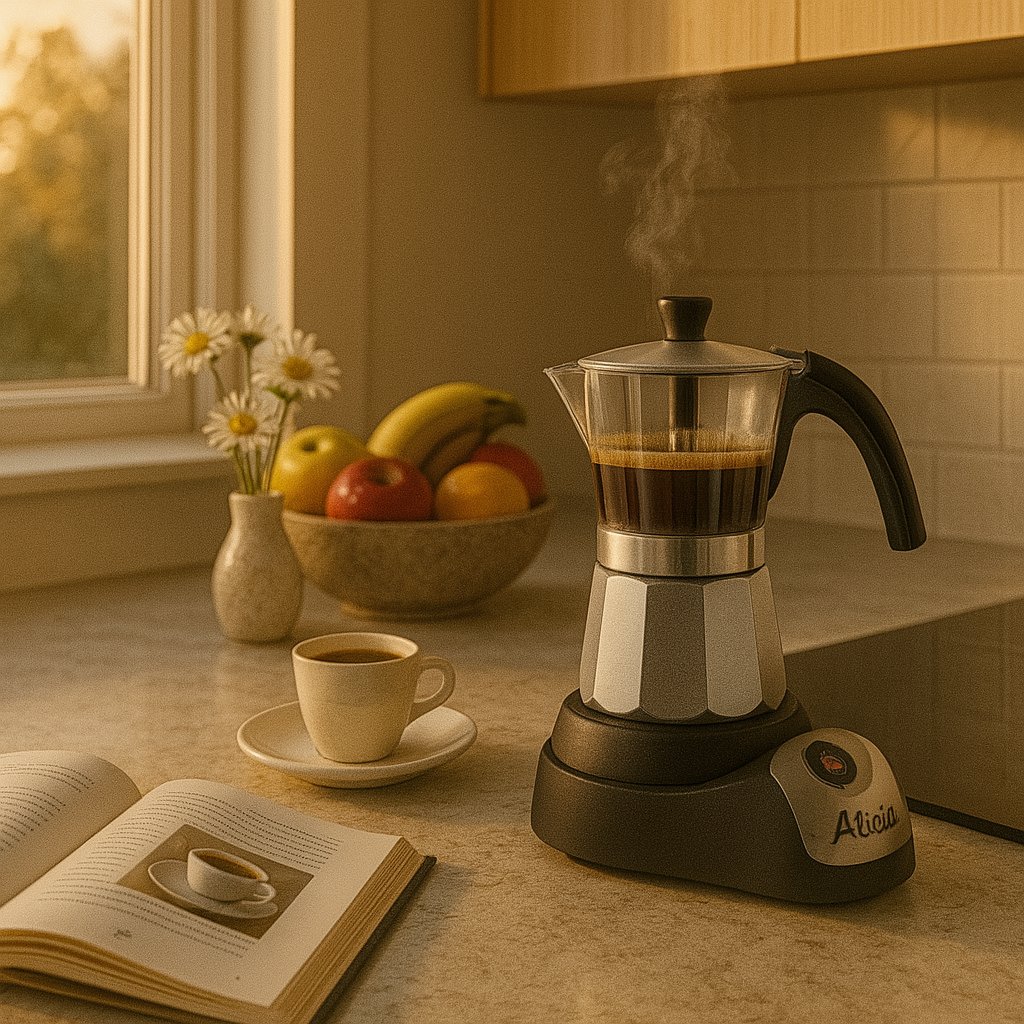How to Make Vietnamese Coconut Coffee
Discover the authentic recipe for Vietnamese coconut coffee (cà phê dừa) - a tropical twist on traditional Vietnamese coffee. Marco shares the secrets of this creamy, aromatic delight that captures the essence of Vietnam's coffee culture and coconut heritage.

Introduction: A Tropical Coffee Adventure
In the bustling streets of Ho Chi Minh City, I stumbled upon a small coffee cart that would change my understanding of Vietnamese coffee forever. The vendor, an elderly woman named Bà Linh, was preparing something magical: Vietnamese coconut coffee, or "cà phê dừa" as she called it with a warm smile. The aroma of strong Vietnamese coffee mixed with the sweet, nutty fragrance of fresh coconut cream created an intoxicating blend that drew me in like a moth to a flame.
As I watched her methodical preparation – the careful layering of ingredients, the precise timing of the phin filter drip, and the gentle swirl that brought everything together – I realized I was witnessing something extraordinary. This wasn't just coffee; it was a celebration of Vietnam's rich agricultural heritage, combining two of the country's most prized ingredients: robust coffee beans and tropical coconuts.
Vietnamese coconut coffee represents the beautiful fusion of tradition and innovation that defines modern Vietnamese coffee culture. While traditional Vietnamese coffee with condensed milk (cà phê sữa đá) remains the cornerstone of the country's coffee identity, coconut coffee has emerged as a beloved variation that showcases Vietnam's tropical abundance and creative spirit.
In this comprehensive guide, I'll share everything I learned from Bà Linh and countless other Vietnamese coffee masters about creating authentic coconut coffee. From selecting the right coffee beans and coconut products to mastering the traditional brewing techniques and understanding the cultural significance, this guide will help you bring a taste of tropical Vietnam to your own kitchen.
Cultural Heritage
Vietnamese Coconut Coffee originated in the Mekong Delta region, where both coffee and coconut palms thrive in the tropical climate. This drink represents the ingenuity of Vietnamese coffee culture, always finding new ways to enhance and celebrate the coffee experience while honoring traditional preparation methods.
Cultural Significance and Origins
The Mekong Delta Heritage
The story of Vietnamese coconut coffee begins in the fertile Mekong Delta, often called the "rice bowl of Vietnam." This region, with its network of rivers and tropical climate, provides ideal conditions for both coffee cultivation and coconut farming. Local farmers discovered that the natural sweetness and richness of coconut cream complemented the bold, slightly bitter profile of Vietnamese coffee beans perfectly.
Unlike the French-influenced coffee culture that introduced condensed milk to Vietnamese coffee, coconut coffee represents a purely Vietnamese innovation. It reflects the country's resourcefulness and deep connection to its tropical environment, utilizing ingredients that grow abundantly in the local landscape.
Regional Variations
Different regions of Vietnam have developed their own interpretations of coconut coffee. In the south, it's often served over ice with thick coconut cream, while northern variations might incorporate coconut milk for a lighter texture. Some coastal areas add a pinch of sea salt to enhance the tropical flavors.
Modern Vietnamese Coffee Culture
Today, Vietnamese coconut coffee has found its place in modern Vietnamese cafés alongside traditional preparations. Young Vietnamese coffee enthusiasts have embraced this drink as a symbol of their country's innovative spirit while maintaining respect for traditional brewing methods. It's become particularly popular among tourists seeking an authentic yet approachable Vietnamese coffee experience.
The drink also represents Vietnam's growing influence in global coffee culture. As Vietnamese coffee gains international recognition, coconut coffee serves as an ambassador for the country's unique approach to coffee preparation, showcasing how traditional techniques can be adapted to create new and exciting flavor profiles.
Essential Ingredients and Equipment
Selecting the Perfect Coffee
The foundation of exceptional Vietnamese coconut coffee lies in choosing the right coffee beans. Vietnamese coffee traditionally uses a blend of Robusta and Arabica beans, with Robusta often taking the leading role due to its strong, bold flavor and higher caffeine content that stands up beautifully to the rich coconut cream.
Coffee Requirements
- Primary Choice: Vietnamese coffee blend (Trung Nguyên or Café Du Monde)
- Alternative: Dark roast Robusta blend (French roast works well)
- Grind Size: Medium to medium-fine (similar to drip coffee)
- Amount: 2-3 tablespoons (20-30g) per serving
- Freshness: Use within 2-4 weeks of roasting for optimal flavor
Coconut Component Options
The coconut element is what transforms regular Vietnamese coffee into a tropical delight. You have several options, each creating a slightly different texture and flavor profile:
Coconut Choices
Fresh Coconut Cream (Premium)
- • Richest, most authentic flavor
- • Thick, luxurious texture
- • Extract from fresh coconut meat
- • Best for special occasions
Canned Coconut Cream (Practical)
- • Consistent quality and texture
- • Readily available year-round
- • Choose brands without additives
- • Chill before use for best results
Coconut Milk (Light Version)
- • Lighter, more subtle coconut flavor
- • Good for daily consumption
- • Mix with condensed milk if desired
- • Healthier option with fewer calories
Coconut Condensed Milk (Fusion)
- • Pre-sweetened convenience option
- • Combines traditional and coconut flavors
- • Available in Asian grocery stores
- • Perfect for beginners
Essential Equipment
Authentic Vietnamese coconut coffee requires specific equipment to achieve the proper brewing technique and presentation. While you can adapt with common kitchen tools, traditional equipment produces superior results:
Vietnamese Phin Filter
Traditional stainless steel filter for slow-drip brewing. Essential for authentic flavor extraction.
Heat-Resistant Glass
Clear glass allows you to watch the beautiful layering process and coffee color development.
Thermometer
For precise water temperature control (195-205°F) to optimize extraction without burning.
Long Mixing Spoon
For gentle stirring and creating the perfect coffee-coconut integration.
Step-by-Step Traditional Recipe
Ingredients (Serves 1)
- • 2-3 tbsp (20-30g) Vietnamese coffee, ground
- • 3-4 tbsp coconut cream or thick coconut milk
- • 1-2 tsp sweetened condensed milk (optional)
- • 6 oz (180ml) hot water (195-205°F)
- • Ice cubes (for iced version)
- • Pinch of sea salt (optional, for enhancement)
Prep Information
- • Prep Time: 5 minutes
- • Brew Time: 4-6 minutes
- • Total Time: 10-12 minutes
- • Difficulty: Easy to Moderate
- • Yield: 1 serving (8-10 oz)
- • Best Served: Hot or iced
Detailed Preparation Steps
Prepare Your Equipment and Ingredients
Begin by gathering all your ingredients and ensuring your Vietnamese phin filter is clean and dry. If using canned coconut cream, chill it for at least 30 minutes beforehand to achieve the perfect consistency. Heat your water to 195-205°F (90-96°C) – if you don't have a thermometer, let boiling water cool for about 30 seconds.
Pro Tip: Warm your glass or cup with hot water before brewing to maintain optimal temperature throughout the process.
Layer the Coconut Base
In your serving glass, add 3-4 tablespoons of coconut cream. If you're using additional sweetened condensed milk, add 1-2 teaspoons and gently stir to combine. This creates your flavor base and will support the beautiful layering effect when the coffee is added.
Traditional Note: Vietnamese coffee masters often add the coconut cream in a specific swirling motion to create an even distribution across the bottom of the glass.
Set Up the Phin Filter
Place the phin filter on top of your glass. Add the ground coffee to the filter chamber, then gently shake to level the grounds. Place the gravity press (the perforated metal disc) on top of the coffee and press down lightly – you want to compress the coffee slightly but not pack it too tightly.
Timing Tip: The ideal drip rate is about 1 drop per second. If it's too fast, your press is too loose; if too slow, you've compressed too much.
Bloom the Coffee
Pour a small amount of hot water (about 2 tablespoons) over the coffee grounds to "bloom" them. This allows the coffee to release trapped CO2 and prepares it for optimal extraction. Wait 30 seconds as the coffee expands and releases its initial aromatics.
Vietnamese Wisdom: "The first water awakens the coffee, the second water extracts its soul" - Traditional Vietnamese saying about proper brewing technique.
Complete the Brewing
Slowly pour the remaining hot water into the phin filter, filling it to the top. Place the lid on the filter to retain heat and wait for the coffee to drip through. This process should take 4-6 minutes for optimal extraction. The slow drip allows for maximum flavor development and the perfect strength for mixing with coconut cream.
The Perfect Integration
Once the dripping is complete, remove the phin filter. You'll see beautiful layers of coconut cream at the bottom and dark coffee on top. Using a long spoon, gently stir in a figure-8 motion to integrate the flavors while maintaining some marbling effect for visual appeal.
Presentation Tip: For an Instagram-worthy presentation, do only 2-3 gentle stirs to maintain the beautiful layer contrast.
Serve and Enjoy
For hot coconut coffee, serve immediately while the temperature contrast between the warm coffee and cool coconut cream creates an amazing sensory experience. For iced coconut coffee, add ice cubes and stir gently. The final drink should have a rich, creamy texture with a perfect balance of coffee boldness and coconut sweetness.
Delicious Variations and Expert Tips
Regional and Modern Variations
Vietnamese coconut coffee has evolved into numerous variations across different regions and modern interpretations. Each variation offers a unique twist while maintaining the core essence of this beloved drink:
Iced Coconut Coffee Float
Popular in Ho Chi Minh City's modern cafés, this variation adds a scoop of coconut ice cream on top of the iced coconut coffee, creating a dessert-like experience.
- • Add 1 scoop of coconut or vanilla ice cream
- • Drizzle with condensed milk
- • Garnish with toasted coconut flakes
Spiced Coconut Coffee
A northern Vietnamese variation that incorporates warming spices, perfect for cooler weather in Hanoi.
- • Add pinch of cinnamon and cardamom to coffee grounds
- • Include a star anise pod during brewing
- • Finish with a dash of black pepper
Coconut Coffee with Pandan
A Southeast Asian fusion that incorporates pandan leaves for a subtle, aromatic complexity.
- • Brew with 1-2 pandan leaves in the phin
- • Use pandan-flavored coconut milk if available
- • Garnish with pandan leaf strips
Professional Brewing Tips
After years of perfecting this recipe and learning from Vietnamese coffee masters, here are the essential tips that will elevate your coconut coffee from good to extraordinary:
Temperature Mastery
The temperature relationship between your coffee and coconut cream is crucial for the perfect drinking experience:
- • Use hot coffee (185-190°F) with chilled coconut cream for temperature contrast
- • For iced versions, let coffee cool to room temperature before adding ice
- • Pre-chill your glass for iced versions to prevent dilution
Flavor Balance Secrets
Achieving the perfect flavor balance requires understanding how each component interacts:
- • Start with less coconut cream and add more to taste – it's easier to add than remove
- • Add a tiny pinch of sea salt to enhance both coffee and coconut flavors
- • Adjust sweetness last, after coffee and coconut are properly integrated
Timing and Technique
Proper timing ensures optimal extraction and flavor development:
- • Don't rush the drip process – slow extraction develops complex flavors
- • Serve immediately after stirring to maintain temperature and texture
- • If making multiple servings, prepare them simultaneously for consistency
Troubleshooting Common Issues
Even experienced coffee makers encounter challenges when perfecting their coconut coffee technique. Here are solutions to the most common problems:
Common Problems & Solutions
Coffee too weak or watery
• Increase coffee amount to 3-4 tablespoons • Use finer grind • Compress coffee more firmly • Ensure water temperature is correct
Coconut cream separation
• Use full-fat coconut cream • Ensure coconut cream is well-chilled • Add cream slowly and stir gently • Avoid overheating
Overly sweet or cloying taste
• Reduce condensed milk • Use lighter coconut milk instead of cream • Add pinch of salt • Increase coffee strength
Drip too slow or fast
• Adjust grind size (coarser for faster, finer for slower) • Check phin filter compression • Clean filter thoroughly between uses
Serving Suggestions and Food Pairings
Traditional Vietnamese Pairings
Vietnamese coconut coffee is traditionally enjoyed as both a morning energizer and an afternoon treat. Understanding how to pair it with food enhances the overall experience and honors Vietnamese coffee culture:
Classic Vietnamese Combinations
Traditional Pairings: Vietnamese coconut coffee pairs beautifully with Vietnamese pastries like bánh mì breakfast sandwiches, sweet bánh pateso (pâté chaud), or simple butter cookies. The coffee's richness complements both savory and sweet flavors without overwhelming delicate Vietnamese taste profiles.
Morning Pairings
- • Bánh mì thịt nướng - Grilled pork bánh mì
- • Croissants - Light, buttery pastries
- • Fresh tropical fruit - Mango, pineapple, dragon fruit
- • Vietnamese egg coffee - As a comparison tasting
Afternoon & Dessert Pairings
- • Bánh flan - Vietnamese crème caramel
- • Coconut macaroons - Complementary coconut flavors
- • Dark chocolate - Rich, contrasting flavors
- • Che ba mau - Three-color Vietnamese dessert
Presentation and Serving Style
The visual presentation of Vietnamese coconut coffee is almost as important as its taste. Vietnamese coffee culture emphasizes the aesthetic experience, and proper presentation shows respect for the tradition:
Authentic Presentation
Serve coconut coffee in clear glasses to showcase the beautiful color gradation. Place the phin filter on a small side plate, and provide a long spoon for mixing. Traditional Vietnamese cafés often serve it on a small tray with a wet towel to clean the phin filter afterward.
Mastering the Art of Vietnamese Coconut Coffee
Creating authentic Vietnamese coconut coffee is more than following a recipe – it's about understanding and respecting a beautiful coffee tradition while embracing the tropical abundance that makes Vietnam unique. Through the careful balance of robust coffee and creamy coconut, this drink captures the essence of Vietnamese innovation and their deep connection to the land.
From my first encounter with Bà Linh's coffee cart in Ho Chi Minh City to countless cups shared with Vietnamese coffee enthusiasts around the world, I've learned that coconut coffee represents something profound: the ability to take traditional techniques and create something entirely new while honoring the past. The slow, meditative process of brewing with a phin filter combined with the tropical richness of coconut creates a moment of calm in our busy world.
The key to mastering Vietnamese coconut coffee lies in patience, quality ingredients, and understanding that each element – the coffee beans, the coconut cream, the brewing technique, and even the presentation – contributes to the final experience. Don't be discouraged if your first attempts don't match your expectations. Like all traditional coffee preparations, this skill develops with practice and attention to detail.
As you perfect your technique, remember that Vietnamese coconut coffee is meant to be shared and enjoyed slowly. Whether you're serving it to friends curious about Vietnamese coffee culture or treating yourself to a moment of tropical indulgence, this drink offers a connection to Vietnam's rich coffee heritage and the creativity that continues to drive Vietnamese coffee innovation.
Take time to savor not just the flavors, but the entire process – from the gentle bloom of the coffee grounds to the satisfying drip of the phin filter, from the beautiful layering of cream and coffee to that first perfect sip. In our fast-paced world, Vietnamese coconut coffee reminds us that the best things in life are worth waiting for, and that sometimes the most extraordinary experiences come from the thoughtful combination of simple, quality ingredients.
Final Wisdom
Vietnamese Coffee Philosophy: "Good coffee is not rushed, good coffee is not hurried. Good coffee is made with love, patience, and respect for the beans that traveled so far to reach your cup." – Traditional Vietnamese coffee saying that applies perfectly to coconut coffee preparation.





